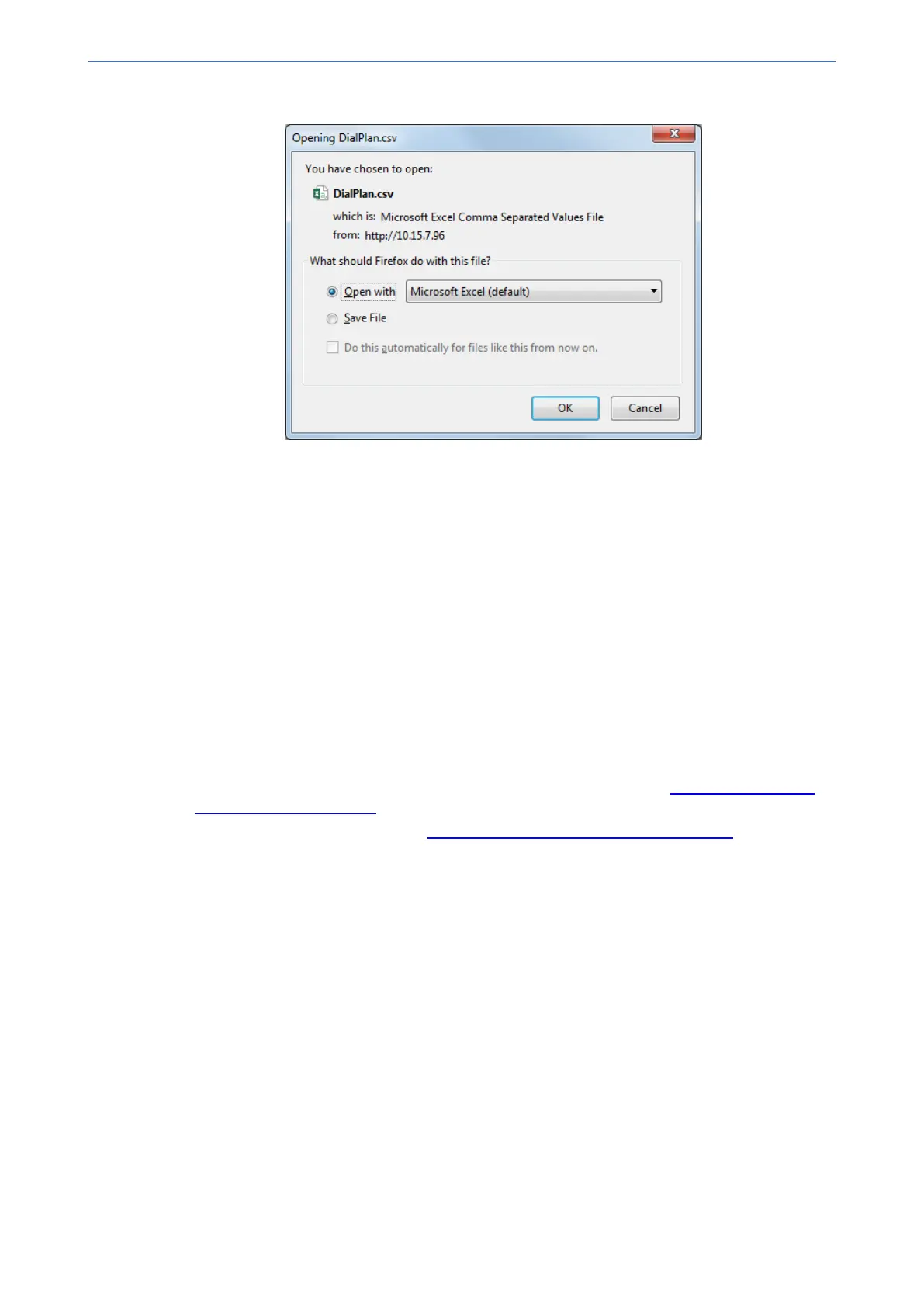CHAPTER20 SIP Definitions
Mediant 1000 Gateway & E-SBC | User's Manual
2. From the 'Action' drop-down menu, choose Export; the following dialog box appears:
3. Select the Save File option, and then click OK; the file is saved to the default folder on your
PC for downloading files.
➢ To export Dial Plan rules of a specific Dial Plan:
1. Open the Dial Plan table.
2. Select the required Dial Plan, and then click the Dial Plan Rule link; the Dial Plan Rule table
opens, displaying the rules of the selected Dial Plan.
3. From the 'Action' drop-down menu, choose Export; a dialog box appears (as shown above).
4. Select the Save File option, and then click OK; the file is saved to the default folder on your
PC for downloading files.
Using Dial Plan Tags for SBC IP-to-IP Routing
You can use Dial Plan tags with IP-to-IP Routing rules in the IP-to-IP Routing table, where tags can
be used for the following:
■ Matching routing rules by source and/or destination prefix numbers (see Using Dial Plan Tags
for Matching Routing Rules)
■ Locating destination IP Group (see Using Dial Plan Tags for Routing Destinations)
Using Dial Plan Tags for Matching Routing Rules
For deployments requiring hundreds of routing rules (which may exceed the maximum number of
rules that can be configured in the IP-to-IP Routing table), you can employ tags to represent the
many different calling (source URI user name) and called (destination URI user name) prefix
numbers in your routing rules. Tags are typically implemented when you have users of many
different called and/or calling numbers that need to be routed to the same destination (e.g., IP
Group or IP address). In such a scenario, instead of configuring many routing rules to match all the
required prefix numbers, you need only to configure a single routing rule using the tag to represent
all the possible prefix numbers.
An example scenario where employing tags could be useful is in deployments where the device
needs to service calls in a geographical area that consists of hundreds of local area codes, where
each area code is serviced by one of two SIP Trunks in the network. In such a deployment, instead
of configuring hundreds of routing rules to represent each local area code, you can simply configure
two routing rules where each is assigned a unique tag representing a group of local area codes and
the destination IP Group associated with the SIP Trunk servicing them.
- 500 -

